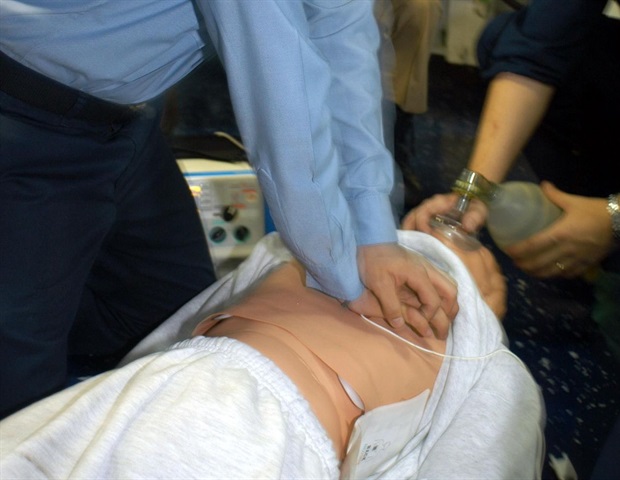Scientists have been constantly finding out numerous features of the extreme acute respiratory syndrome coronavirus 2 (SARS-CoV-2), the causative agent of the coronavirus illness 2019 (COVID-19), in an effort to cut back mortality charges related to its an infection.
Research: A Copper nanoparticles-based polymeric spray coating: Nanoshield against Sars-Cov-2. Picture Credit score: Kateryna Kon / Shutterstock.com
Background
The event of a tool that might block or disrupt the transmission chain of SARS-CoV-2 has the potential to play a major function in containing the present COVID-19 pandemic. Though a number of COVID-19 therapeutic measures and vaccines have efficiently diminished mortality and extreme an infection charges all through the world, the general public continues to be inspired to make use of efficient prophylactic measures to forestall SARS-CoV-2 transmission.
The evolution of SARS-CoV-2 has resulted within the emergence of a number of new variants which can be extra transmissible, virulent, and succesful of escaping immune responses generated by pure an infection or vaccination. Thus, it’s crucial to develop measures that may cut back the chance of person-to-person transmission among the many public and healthcare staff by way of the proper utilization of private security units, comparable to private protecting gear (PPE) and facemasks.
A number of commercially out there facemasks comprise filters that aren’t in a position to inactivate pathogens like SARS-CoV-2 or multidrug-resistant micro organism. The restrictions of these filters thus emphasize the necessity to develop safer and extra environment friendly PPE, facemasks, and antiviral coatings for surfaces which can be ceaselessly touched by folks to additional cut back the transmission of SARS-CoV-2.
Earlier research have indicated that copper can successfully and shortly inactivate SARS-CoV-2. These research have revealed that the antimicrobial exercise of copper relies on 4 processes, together with its capability to incite cell harm, generate reactive oxygen species (ROS), cut back the integrity of cell membranes, in addition to degrade viral genomic materials.
Metallic nanoparticles (NPs), comparable to these constructed from silver, copper iodide, and zinc oxide, possess a variety of antimicrobial exercise because of this of their small measurement and excessive surface-to-volume ratio. These metallic NPs are in a position to inactivate norovirus surrogates and bacterial cells by damaging their membrane, which ends up in the discharge of intracellular substances and subsequent cell loss of life. These viruses are additionally inactivated by the denaturation of important proteins.
Thus far, there stays a restricted quantity of research reporting the antiviral properties of copper NPs. In a latest Journal of Utilized Biomaterials & Practical Supplies research, researchers show how copper NPs can doubtlessly be included into filters, PPE, facemasks, and clothes to successfully inactivate SARS-CoV-2.
Concerning the research
The researchers of the present research have beforehand developed a single-use filter with antiviral properties that can be utilized for facemasks. This filter relies on polymer and copper NPs that had been utilized by way of spray expertise to reinforce the efficacy of PPE against SARS-CoV-2.
Within the present research, scientists utilized three courses of copper NPs of completely different sizes together with 4-6 nanometers (nm), 25 nm, and 60–80 nm. All three courses of nanomaterials had been dispersed in water and characterised by way of completely different analytical instruments. The newly developed antiviral coating was primarily based on copper NPs and polyurethane (PU) by way of spray expertise.
The coating exhibited promising virucidal results against SARS-CoV-2, because it was discovered to remove 99% of viral infectivity in half-hour. Thus, this coating might present vital antiviral safety on surfaces and supplies in healthcare settings.
These observations are per these reported in a earlier research, whereby SARS-CoV-2 was successfully inactivated by copper sulfide (CuS) included inside a three-layer masks design. Equally, one other earlier research reported {that a} copper-coated polypropylene filter face masks exhibited robust antiviral properties against SARS-CoV-2. Cuprous oxide (Cu2O) particles sure with polyurethane have additionally been proven to quickly inactivate SARS-CoV-2.
Though the incorporation of a number of nanoparticles, comparable to these consisting of graphene or silver, into face masks has been beforehand reported to inactive SARS-CoV-2, the manufacturing course of is extraordinarily complicated and costly. Comparatively, copper NPs-based antiviral coatings could possibly be developed utilizing comparatively low-cost applied sciences, all of the whereas successfully decreasing the transmission of a number of contagious ailments. To this finish, spray expertise is a speedy, cost-effective, reproducible, steady, and scalable course of.
Conclusions
The authors of the present research proposed a sensible, low-cost, and large-scale methodology for the event of a copper NP-based antiviral coating for surgical masks which can be constructed by way of spray expertise. Sooner or later, extra analysis is required to evaluate the protection profile and optimum use of spray expertise for mass manufacturing and commercialization of the product. Moreover, scientists ought to consider the coating biostability for an extended interval.







